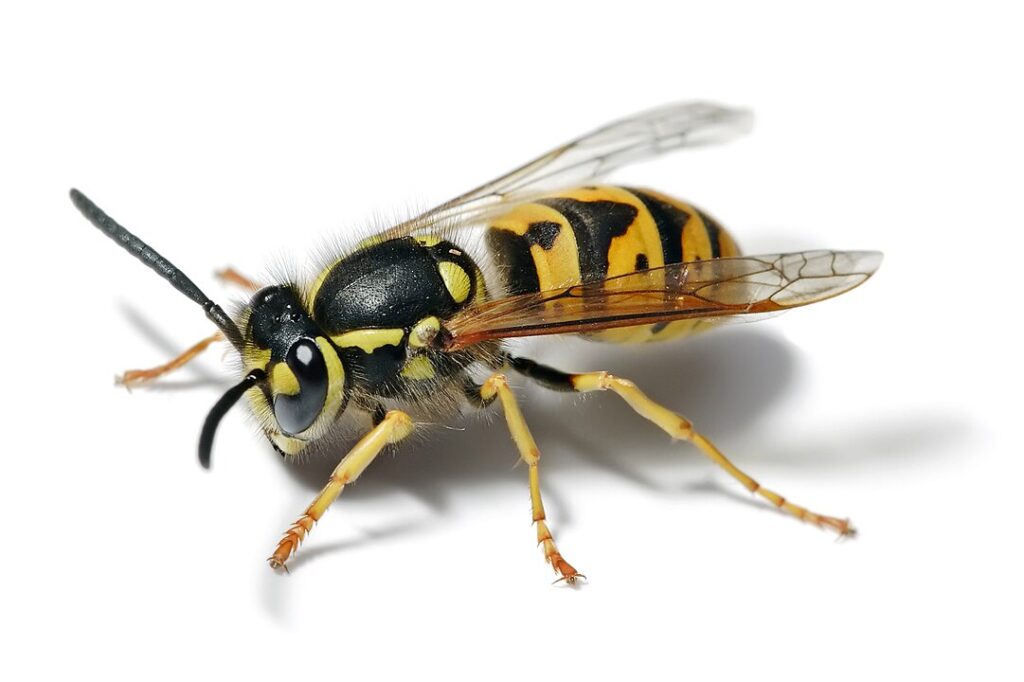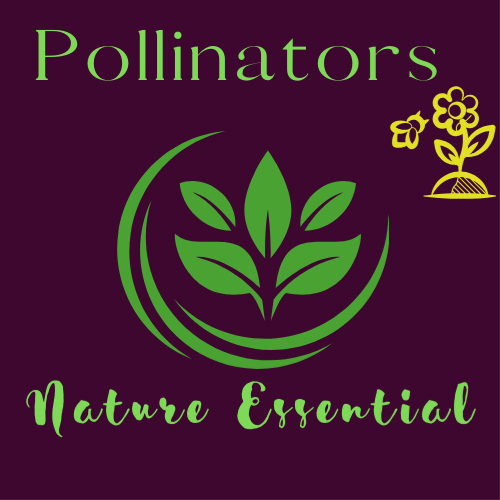
Vespula (Yellowjackets)
Vespula is a genus of social wasps in the family Vespidae, commonly known as yellowjackets. These wasps are closely related to hornets, and they are notorious for their aggressive behavior and painful stings. Yellowjackets are found across the world, especially in temperate climates, and they are often encountered in urban and suburban areas where their nests are built in hidden, sheltered locations.
Physical Characteristics
Yellowjackets, particularly those in the Vespula genus, are typically medium-sized wasps with a distinctive appearance. They are characterized by a smooth, shiny black and yellow striped abdomen, which gives them their “yellowjacket” name. The yellow markings can range from bright yellow to pale yellow, depending on the species. They have two pairs of wings, a narrow waist, and powerful mandibles for cutting and biting. Their sting is often a distinguishing feature, capable of delivering venom multiple times as the sting is not barbed like that of honey bees.
Nesting and Colony Structure
Vespula wasps are social insects, living in large colonies that are usually started by a single queen in the spring. After hibernating through the winter, a fertilized queen emerges and begins to build a nest. The nest is typically constructed from a paper-like substance that is made by chewing wood fibers and mixing them with saliva. These nests can be found in sheltered areas such as tree hollows, attics, sheds, and underground burrows.
At first, the queen builds a small nest and lays eggs that hatch into worker wasps. These workers take over the tasks of foraging, nest maintenance, and guarding the colony. As the season progresses, the colony grows, and new queens and male drones are produced. These new queens mate with the males, and the fertilized queens leave the nest to hibernate over the winter. The worker wasps and males die off, and the cycle begins again in the spring.
Behavior and Social Structure
The social structure of Vespula colonies is highly organized, with a clear division of labor. The queen’s role is to reproduce, while the workers are responsible for foraging, defending the nest, and taking care of the brood. The males’ sole purpose is to mate with the new queens, and they die shortly after mating.
Vespula wasps are known for their aggressive behavior, especially when they feel their nest is threatened. They are highly territorial and will aggressively defend their nests against perceived threats, including humans and animals. Unlike honey bees, yellowjackets can sting multiple times because their stingers are not barbed, and they are capable of stinging repeatedly.
Diet and Feeding Behavior
Yellowjackets are omnivorous, and their diet is diverse. They feed on a wide range of food sources, including meat, fruit, nectar, and sugary substances. As opportunistic feeders, yellowjackets are often attracted to human food and sugary drinks, which can make them a nuisance in outdoor settings. Their tendency to scavenge also leads them to hunt other insects, and they play a role in controlling pest populations.
During late summer and fall, yellowjackets become more aggressive, particularly as their natural food sources begin to dwindle and the colony’s focus shifts from brood care to reproductive success. It is at this time that they are most likely to intrude on human activities, scavenging at picnics, barbecues, and other outdoor events.
Ecological Importance
Despite their aggressive nature, Vespula wasps are beneficial insects in many ecosystems. As predators, they help control populations of other insects, including harmful pests like caterpillars, flies, and aphids. Their predation on these pests contributes to natural pest control and can reduce the need for chemical pesticides.
In addition to their role as predators, yellowjackets also serve as important food sources for many animals. Birds, mammals, and other insects feed on yellowjackets and their larvae. The ecological balance that these wasps help maintain is significant, especially in agricultural settings where natural pest control is essential.
Stinging Behavior and Safety
Yellowjackets are infamous for their painful stings. While the sting itself is not typically fatal to humans, it can cause intense pain, swelling, and allergic reactions in some individuals. Multiple stings are possible if the wasp feels its nest is under threat, and they can sting repeatedly because their stingers do not become lodged in the skin like honey bees.
To avoid getting stung by yellowjackets, it is advisable to stay away from their nests and avoid disturbing them. If you do encounter a yellowjacket, it’s important to remain calm, as sudden movements can provoke them. In the case of an allergic reaction, prompt medical attention is necessary, as yellowjacket stings can trigger severe allergic responses in some people.
Mating and Reproduction
Mating in Vespula colonies occurs toward the end of the colony’s lifecycle, during the fall. New queens and males are produced, and after mating, the fertilized queens leave the nest to find a safe place to hibernate through the winter. The males typically die shortly after mating, and the workers and original queen die with the onset of cold weather.
The new queens will hibernate through the winter months and emerge in the spring to start new colonies. They use their stored sperm to fertilize their eggs, and the cycle continues.
Control and Management
While Vespula wasps can be beneficial for pest control, they are often viewed as pests themselves when they build nests near human habitation. In order to avoid conflict with these wasps, it is important to exercise caution around their nests and to keep food sources covered when dining outdoors. In cases of a nest near living spaces, professional pest control services can safely remove and relocate the nest.
To prevent attracting yellowjackets to your home or yard, avoid leaving open containers of food or sugary drinks outside, and ensure that trash is covered and sealed. If you discover a nest, it is best to leave it undisturbed or seek professional assistance, as trying to remove a nest yourself can be dangerous.
Conclusion
Vespula wasps, or yellowjackets, are fascinating insects with a complex social structure and an important role in ecosystems. While their aggressive nature and painful stings often make them undesirable neighbors, their ability to control pest populations and contribute to biodiversity cannot be overlooked. By understanding their behavior and role in nature, humans can learn to coexist with these insects while minimizing conflict and ensuring their safety.
